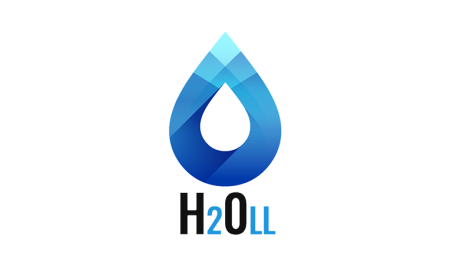Acoustic resonance excited heat exchange
Towards enhancing the efficiency of gas turbines, most thermodynamic cycles require heat to be either added or dissipated by a heat exchanger, which operates by associating two streams of different thermal potential. Due to form factor limitations of many size...
Categories:
Automation, Mobility and Aerospace|Sustainability and Energy
Activated carbon electrodes for heterogeneous electrocatalysis
In order to enhance the efficiency of electrocatalysis, carbon electrodes are coated with platinum (Pt) catalyst. However, the use of Pt, which is a costly rare metal, poses obstacles to the growth of markets such as hydrogen production in electrolyzers,...
Categories:
Chemistry and Materials|Sustainability and Energy
Adsorption - absorption materials
Adsorbent/absorbent polymers are needed for the decontamination of water from organics and from metal ions. It is, however, difficult to incorporate high quantities of active adsorbents in monoliths. Highly porous emulsion-templated hydrophobic polymers, known as polyHIPEs since they are synthesized...
Categories:
Chemistry and Materials|Sustainability and Energy
Advanced thin-layer coating for superior UV resistance in polymers
Plastics are highly susceptible to UV radiation, leading to degradation, reduced lifespan, discoloration and frequent replacements. Traditional solutions, such as UV stabilizers, absorbers, antioxidants, and thick coatings, often come with limitations—altering mechanical properties, requiring chemical compatibility, or relying on heavily...
Categories:
Chemistry and Materials|Physics and Electro-Optics|Sustainability and Energy
Aluminum-air (Al-air) battery technology
The energy capacity of today batteries is a limitation in usage of all portable devices from cell phones to hearing aid devices. The possible current density for Al/Air battery is at the limit of 1.5mA/cm2. Additionally, initial potential drop at...
Categories:
Chemistry and Materials|Sustainability and Energy
Bio-based, bio-degradable plastic
Much of the planet is swimming in discarded plastic. Plastic pollution has become one of the most pressing environmental issues, as rapidly increasing production of disposable plastic products overwhelms the world’s ability to deal with them. In order to handle...
Categories:
Chemistry and Materials|Food and Agriculture|Sustainability and Energy
Bio-fabrication of nanocellulose-mycelium hybrid materials
Fibrous network of mycelium - the vegetative part of fungi - is employed to produce sustainable alternatives for synthetic foams. Clear correlation between fungi, substrate, mold properties, and incubation conditions on final material characteristics, is used to control material density,...
Categories:
Chemistry and Materials|Sustainability and Energy
Bioplastic eco-friendly films
Plastics are known to be one of the most urgent problems in the world due to its increase use in different applications such as food, house holding, construction etc. Today some of the plastics can be recycled while some cannot. In...
Categories:
Chemistry and Materials|Food and Agriculture|Sustainability and Energy
Brackish-water desalination using mineral-selective membrane
Reverse osmosis and nanofiltration membranes used for desalination typically remove most or all minerals from water, including beneficial ones like calcium and magnesium. While eliminating sodium chloride is essential, some of these filtered-out minerals are vital for health. The proposed...
Categories:
Chemistry and Materials|Food and Agriculture|Sustainability and Energy
Carbon-based electrodes for fuel cells and electrolyzers
Hydrogen fuel cells are a key enabling technology towards supplant CO2-emitting fuels with hydrogen. Proton Exchange Membrane (PEM-FC) technology is the dominant incumbent for automotive applications. However, PEM-FCs suffer from a strong drawback in the cost of the fuel cell...
Categories:
Chemistry and Materials|Sustainability and Energy
Cathodic electrophoretic deposition of barium titanate layers from aqueous suspension
Barium titanate (BaTiO3) is one of the most important ceramic materials used in electronics. As an intrinsic ferroelectric material it can be utilized for various applications like multilayer capacitors, grain boundary capacitors, low-temperature sensors and thermistors. There is a growing...
Categories:
Chemistry and Materials|Sustainability and Energy
Clean energy generation via gas or liquid flow
Wind turbines are rotating elements with the potential to hit objects or birds near them. A high efficiency, green energy can be produced by means of actively controlled vortex shedding (ACVS). Reciprocating movement of element, in direction perpendicular to the...
Categories:
Sustainability and Energy
Conversion of Cellulose Biomass into Electrical Power Using Cellulase Enzyme
Conversion of biomass to electric power is an attractive strategy for the generation of green and efficient energy. As Cellulose is one of the most abound polymers on earth, ~70% of the plant biomass is cellulose, which makes him an...
Categories:
Chemistry and Materials|Sustainability and Energy
Cooling, dehumidification and air conditioning by waste heat
Growing demand for air conditioning in recent years has caused a significant increase in demand for electrical energy. Electric utilities have their peak loads on hot summer days, and are often barely capable of meeting the demand, struggling with burn-out...
Categories:
Sustainability and Energy
Delamination of multilayers films and packages
Every year, millions of tons of multilayer laminate materials—like food packaging, coffee bags, paper cups, juice cartons, and even solar panels—are either incinerated or landfilled due to the lack of an industrial method for separating their tightly bonded layers. These...
Categories:
Automation, Mobility and Aerospace|Chemistry and Materials|Food and Agriculture|Sustainability and Energy
Direct injector of hydrogen or hydrogen-rich gaseous fuel
Current hydrogen rich fuel direct injectors suffer from low flow cross section, non-reliable closure and a non-optimized jet structure, which have a detrimental effect on the engine performance. Achieving higher flow rate, shorter open-close timing and higher backward pressure resistance...
Categories:
Automation, Mobility and Aerospace|Sustainability and Energy
Efficient biodiesel production using cellulose microcapsules
Biodiesel is typically made by chemically reacting lipids such as animal fat, soybean oil or some other vegetable oil with an alcohol. This process requires, other than oil and alcohol also enzymes. In order to produce alcohol one can use...
Categories:
Chemistry and Materials|Sustainability and Energy
A family of continuous porous polymers, generally known as polyHIPEs, have been synthesized using high internal phase emulsions (HIPEs) as templates for the porous structure. This composition-of-matter having microscopic closed-cell capsules (either hydrophobic and hydrophilic) can be utilized for various...
Categories:
Chemistry and Materials|Food and Agriculture|Sustainability and Energy
Engine design based on novel thermodynamic cycle
Internal combustion engines (ICE) will remain main propulsion technology for various applications for many years. However the challenges are security of energy supply, climate change issues and air pollution. Combined electro-thermo-chemical technology goal is to deal with all those issues...
Categories:
Automation, Mobility and Aerospace|Sustainability and Energy
Enhancing conductivity and reactivity in electro-catalytic materials
Electrode quality for electrochemical conversion needs material improvement and design. For instance, conversion efficiencies of photoelectrochemical cells used for water splitting reaction are limited by the intrinsic material properties of the electrode. The electrode should be a good conductor, a...
Categories:
Chemistry and Materials|Sustainability and Energy
Flexible ultra-light weight conductors
Copper has been used in electrical wiring since the invention of the electromagnet and the telegraph in the 1820s. Standard copper wires are being used for numerous applications reliably for many years. However, as technology changes requirements from the current...
Categories:
Automation, Mobility and Aerospace|Chemistry and Materials|Sustainability and Energy
Glucose and Lactate Continuous Monitoring
A great effort has been made to establish efficient electron transfer between electrodes and enzymes. The protein shell of the enzyme prevents electrical communication with electrodes, therefore, redox mediators are required for activation. present new methodology to establish efficient electron...
Categories:
Medical Devices|Sustainability and Energy
H2 production by electrocatalysis assisted by Peptoid complex
Water splitting is an important process towards the generation of H2 as a renewable and sustainable energy source; however, the high overpotential and slow kinetics limit its applicability. Most current photo- and electro-catalysts are expensive to make, not environmentally friendly...
Categories:
Automation, Mobility and Aerospace|Chemistry and Materials|Sustainability and Energy
High potential cathodes for thermal lithium batteries
Thermal batteries have long shelf-life, short service life and high capacity. They are very reliable. Increasing energy density will allow reducing volume of the batteries. This can be achieved by increase of discharge potential of the batteries via increase in...
Categories:
Chemistry and Materials|Sustainability and Energy
High rate hydrogenotrophic denitrification of drinking water
A novel pressurized high rate hydrogenotrophic reactor for denitrification without gas purging. This invention shows that during continuous operation a gas–liquid equilibrium is established in the reactor according to Henry’s law and excess N2 gas is carried out by the...
Categories:
Sustainability and Energy
High-temperature anion-exchange membrane fuel cell
A conventional AEMFC that can operate at temperature over 100oC. The cell structure and conditions are such that even though the temperature is high at least some of the water in it remain liquid by balancing dew point, pressures, adding...
Categories:
Sustainability and Energy
Highly stable membranes for alkaline fuel cells and electrolysers
Alkaline fuel cells and electrolyzers offer many advantages over their acidic counterparts, the main one being the possibility to replace precious metals in electrodes with other, low cost and abundant metals. However, the alkaline environment leads to substantial electrolyte decomposition...
Categories:
Automation, Mobility and Aerospace|Chemistry and Materials|Sustainability and Energy
Hydrogen and electric energy production on-demand
Hydrogen storage and transportation is both inefficient and hazardous. Hydrogen production by reaction of water and activated aluminum can be done on demand and on the location where the hydrogen will be used. The weight of hydrogen produced is 11%...
Categories:
Automation, Mobility and Aerospace|Sustainability and Energy
Imaging of the electric grid
Power plants supply the city's electrical needs using alternating current (AC) power transmission. In AC power transmission, electrical energy is distributed by generating an AC voltage waveform (usually a sine wave) with a frequency of 50 or 60 Hz. This...
Categories:
Physics and Electro-Optics|Sustainability and Energy
Increasing efficiency of fans, turbines and rotating blades
Adding steady or oscillatory perturbation near the leading edge of the blades - mechanical, electro-mechanical, pneumatic, hydraulic, plasma based, Lorentz force based, etc. or Gurney flaps to the trailing edge of fan blades increases air-flow, aerodynamic efficiency, power savings and...
Categories:
Security & Defense|Sustainability and Energy
Innovative non-condensables purge system for closed cycle absorption heat pumps
Non-condensable gases (NCG) are known to cause a significant deterioration in the condensation and absorption heat and mass transfer processes in absorption systems used for thermal cooling and heating. Most absorption systems on the market are chillers, which operate with...
Categories:
Sustainability and Energy
In numerous widely used applications, such as micro gas turbines, fuel cells and internal combustion engines, significant amount of thermal energy is expelled with hot waste gas. The inverted Brayton bottoming cycle (IBC) offers a way to utilize this expelled...
Categories:
Sustainability and Energy
Linear motion in a cylinder using helical wave generator in elastic component. A large static radial holding force is formed in addition to the linear motion created by the elliptical movement. The motion is precise and requires low power engine...
Categories:
Medical Devices|Sustainability and Energy
Local reuse of grey water and follow-up on systems for grey water recycling
Greywater (GW), domestic wastewater excluding the streams generated by toilets and kitchens, can serve as an alternative water source. The main options for GW reuse are toilet flushing and garden irrigation. Greywater reuse can significantly reduce domestic water consumption. While...
Categories:
Sustainability and Energy
Mechanochemical recycling of plastic mixtures for injection molding
Plastic recycling has many challenges, most of which are a consequence of the huge variability of materials in the recovered plastic. While separation between different types of plastics can be somewhat support recycling, even if 100% of the same polymer...
Categories:
Chemistry and Materials|Sustainability and Energy
Mold-less molding additive manufacturing of volumetric objects
Traditional additive manufacturing methods such as 3D / 4D printing, Selective laser sintering (SLS), Stereolithography (SLA), Digital light process (DLP) and Volumetric additive manufacturing (VAM) are powerful tools for prototyping, but they’re limited by slow build speed and inhomogeneous mechanical...
Categories:
Automation, Mobility and Aerospace|Chemistry and Materials|Medical Devices|Sustainability and Energy
Nano gate - stimulus induced nanofluidic device
Flow control that is activated by environmental and other pre-designed parameters can be useful in many systems such as agriculture and water treatment. Natural tendency of two-dimensional (2D) clay nano-particles to self-assemble and restrict water permeability in soils can be...
Categories:
Chemistry and Materials|Food and Agriculture|Pharmaceuticals and Biotechnology|Sustainability and Energy
Novel Protein-Based Aerogels
Aerogels are like hydrogels in which the liquids have been replaced by a gas. Recently, natural protein-based aerogels found to be very interesting in the biomedical and biomaterial fields due to their biocompatibility and degradability. Current approaches still use harsh...
Categories:
Chemistry and Materials|Pharmaceuticals and Biotechnology|Sustainability and Energy
Ocean Restoration by AI-Designed 3D-Printed Reefs
Marine ecosystems are under increasing pressure from human activity and climate change. Coral reefs—among the most diverse and valuable ecosystems on Earth—are especially vulnerable. Their decline threatens not only marine biodiversity but also the wellbeing of human communities that depend...
Categories:
Chemistry and Materials|Sustainability and Energy
Organic semiconductors p-dopants
Organic solar cells represent a promising advancement in solar technology, having recently achieved a significant improvement in photo-conversion efficiency from approximately 10% to 17%, with a projected maximum efficiency slightly surpassing 20%. Overcoming challenges in extracting carriers from the active...
Categories:
Chemistry and Materials|Physics and Electro-Optics|Sustainability and Energy
Plant proteins as edible matrixes
Cultivated meat is considered one of the leading solutions to the global food crisis, offering conventional meat-like nutritional values and eating experiences without harming animals and with a much lower environmental footprint compared to conventional meat production. The development of...
Categories:
Food and Agriculture|Sustainability and Energy
Protection layer for battery electrodes
In Li-ion batteries electrode materials degrade through their reactive interface with the electrolyte. The undesirable interfacial reactions result in formation of layers that impede charge transfer and can serve as an active site for electrolytic consumption, electrode corrosion and passivation,...
Categories:
Automation, Mobility and Aerospace|Chemistry and Materials|Sustainability and Energy
Protein-based polymers as the active layer in electronic devices
Using sustainable and affordable proteins as the basis for the formation of a new family of environmental polymers that are free-standing, soft, elastic, and most importantly, their electronic and ionic conductivity can be engineered. A special focus is given to...
Categories:
Chemistry and Materials|Medical Devices|Sustainability and Energy
Pulse tube sterling type cryogenic cooling
Refrigeration at temperatures around 80-150 K is required for infrared night-vision equipment with high resolution and fast response times. Compact, light-weight devices are necessary for many typical applications, such as for man-portable night-vision equipment, unattended aerial vehicles, and for use...
Categories:
Security & Defense|Sustainability and Energy
Fuel cells require very clean hydrogen for proper operation. Hydrogen transportation poses several logistics and safety issues. The solution might be – on board clean hydrogen production using a very efficient autothermal system. The system produces clean hydrogen by steam...
Categories:
Chemistry and Materials|Sustainability and Energy
Recycled, 3D printed wood products for the construction industry
The construction industry is one of the most polluting industries, mostly due to concrete and plastic usage. To reduce construction related pollution and waste, one of the possible solutions is to increase the use of Recycled Wood & Polymer Materials...
Categories:
Automation, Mobility and Aerospace|Chemistry and Materials|Sustainability and Energy
Phosphogypsum is a product of manufacturing of phosphoric acid from phosphate rock. It contains radioactive impurities and chemical impurities which deteriorate the gypsum quality. Huge quantities of phosphogypsum is piling next to quarries. Some process exists to clean the phosphogypsum...
Categories:
Chemistry and Materials|Sustainability and Energy
Rotational casting of inorganic cement architectural components
Façade tiles and aesthetics components with complex geometries are currently difficult to fabricate and require cement or mechanical parts such as bolts for connections. Inorganic cementitious tiles are relatively weak and absorb water. Manufacturing such architectural elements from polymers and...
Categories:
Chemistry and Materials|Sustainability and Energy
Separation of ions from water and wastewater
Purification of water or waste water from nitrates and other ions can be done using ion exchange and other processes which consume large amounts of salts, acids or bases and produce highly concentrated brines that are difficult to treat. In...
Categories:
Chemistry and Materials|Sustainability and Energy
While chemical compounds are essential to many aspects of our lives and provide key solutions, they may also create environmental and health challenges. Chemical mixture might have an increased effect on health and environment. Main inspection method is spectrometry and...
Categories:
Chemistry and Materials|Sustainability and Energy
Traditional stimuli-responsive actuators convert environmental cues (e.g., water uptake, heat, or electric fields) into motion, but they often require the entire structure to be stimulated and rely on external power or control systems, limiting autonomy and adaptability. The proposed solution...
Categories:
Automation, Mobility and Aerospace|Chemistry and Materials|Sustainability and Energy
Urban Shade Assets Mapper (USAM)
USAM is a GIS tool that facilitates and streamlines the generation of high-resolution urban shade maps. Shade maps visually inform users about street-level shade availability during the hot season, taking into account shade cast by buildings and trees. In places...
Categories:
Sustainability and Energy
Water desalination - selective removal of specific Ions
Selective water treatment, which removes more problematic ions preferentially over others, is an important goal towards next generation, energy efficient water treatment systems. Current treatment techniques rely on chemical sedimentation or membrane separation, the latter of which is used in...
Categories:
Chemistry and Materials|Sustainability and Energy
Water purification by forward osmosis
A new separation unit for FO comprising of 2 separation columns which are filled with a stimulus water-absorbing polymer gel. The gel is thermo-sensitive with lower critical solution temperature. This material absorbs water below critical temperature Thyd and release water...
Categories:
Chemistry and Materials|Sustainability and Energy


























































